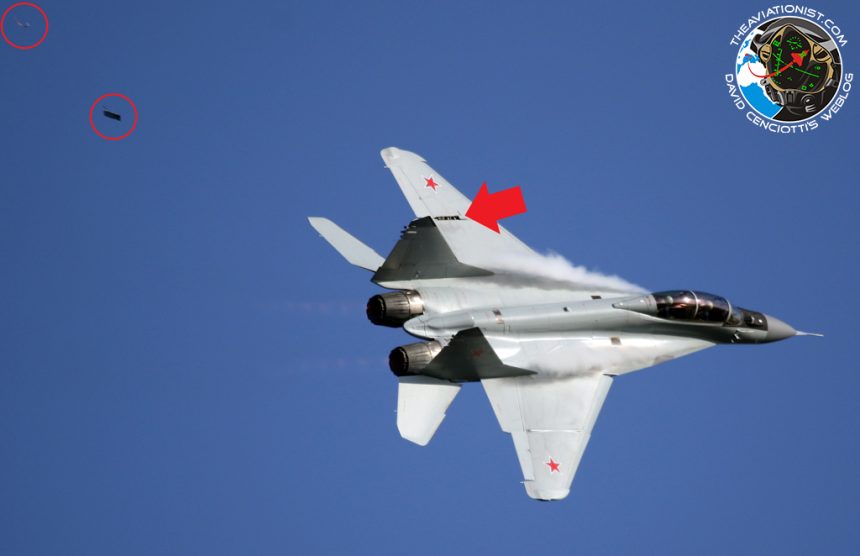Panel Loss is Second Caught on Film This Month Following U.S. F-16 Three Weeks Ago.
A new MiG-35D two-seat, advanced “generation 4++” fighter lost a large wing panel from its left wing after takeoff during a flight demonstration at the MAKS Aviasalon 2019 air show at Zhukovsky Air Base outside Moscow on Thursday, August 29, 2019. The aircraft, which may have been crewed by a delegation from the Indian Air Force at the time of the panel separation, continued with its flight demonstration and landed without incident.
The missing wing panel and other components that separated from the aircraft landed in a field not far from the photographer’s platform where two correspondents from TheAviationist.com, Lance Riegle and Tom Demerly, were shooting the photos in this report.
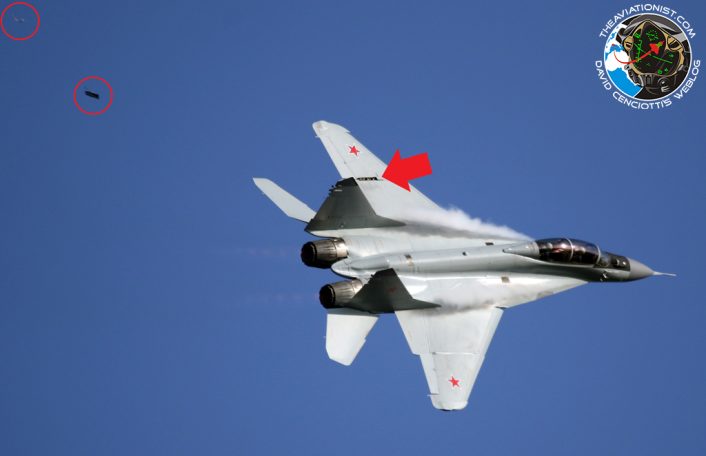
The incident on Thursday at MAKS near Moscow comes only 27 days after a similar incident with a USAF F-16 from the F-16 Demo Team at Willow Run Airport in Michigan in the U.S. on August 2, 2019.
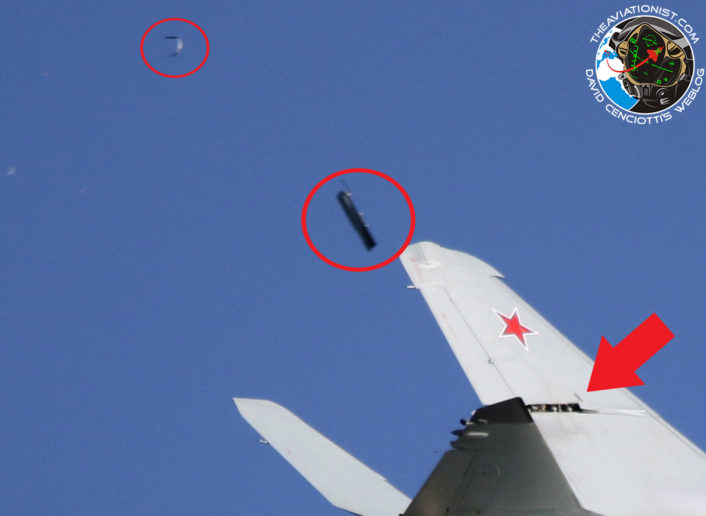
It is not unusual for high performance fighter aircraft to lose a panel during repeated flight demonstration routines where the planes are subjected to abnormally high G-forces. “It does happen occasionally. It’s just normal operating for an F-16, or any aircraft really. Sometimes latches fail,” USAF F-16 Viper Demo Team Commander Major Garrett Schmitz, callsign “Toro”, told TheAviationist.com in an interview following the August 2, 2019 incident Saturday at Thunder Over Michigan.
You may also remember the mishap occurred to the F-16 of the Viper Demo Team that was forced to stop the display at RIAT 2019 in RAF Fairford, after the horizontal stabilizer delaminated.
The incident is potentially embarrassing for Mikoyan, a division of Russia’s United Aircraft Corporation (UAC), since the MiG-35 was reported that same day in a story published in India’s zeenews.com to have, “…a sturdier airframe…” than previous versions of the MiG-29.
The same day as the wing panel separation incident a story appeared on India’s zeenews.com that said, “Indian Air Force (IAF) pilots on Thursday got a chance to fly the Russian 4++ Generation Mikoyan MiG-35D fighter at the International Aviation & Space Salon MAKS 2019. IAF test pilots Group Captain BS Reddy and Wing Commander FL Roy flew two sorties on MiG-35D, the twin-seat version of the combat aircraft at the airshow being held at Zhukovsky International Airport outside Moscow, Russia.” It has not been confirmed that the Indian pilots were flying the aircraft at the time of the wing panel separation incident.
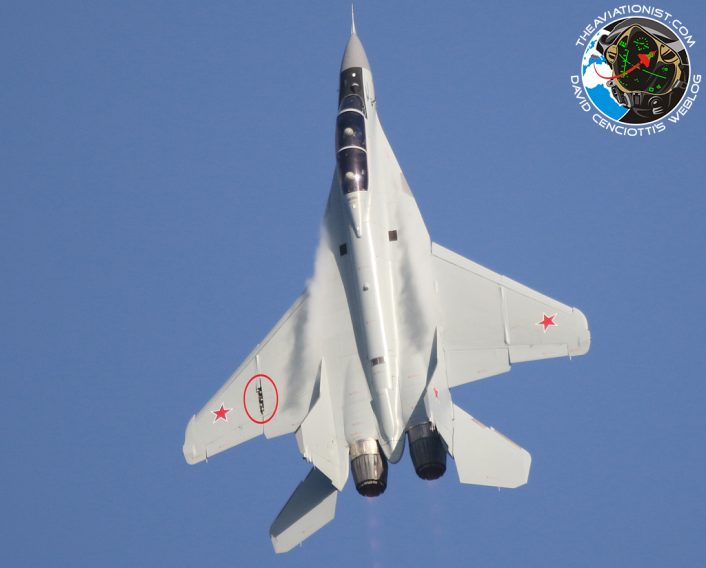
The MiG-35 is an important export offering from United Aircraft Corporation’s Mikoyan division since it offers near-5th generation capability in a completely updated airframe and avionics/flight control package at an economical price relative to similar western offerings.
The MiG-35 will be sold in two variants, a single-seat and two-seat model. Both versions employ an advance Active Electronically Scanned Array (AESA) radar for prosecuting air-to-air targets with increased range, aperture and speed. The MiG-35 also has improved performance compared to earlier versions of the MiG-29 family of combat aircraft including longer range.
MiG-35 comes in single-seat and twin-seat variants, has a sturdier airframe and is fitted with an Phazotron Zhuk-A/AE Active Electronically Scanned Array (AESA) radar that is claimed to have beyond visual range capability up to 260 kilometers and the ability to simultaneously track up to 30 targets while functioning simultaneously in air-to-air and air-to-ground modes. The radar is claimed to be able to simultaneously target weapons at six air-to-air targets and four air-to-ground strike targets.
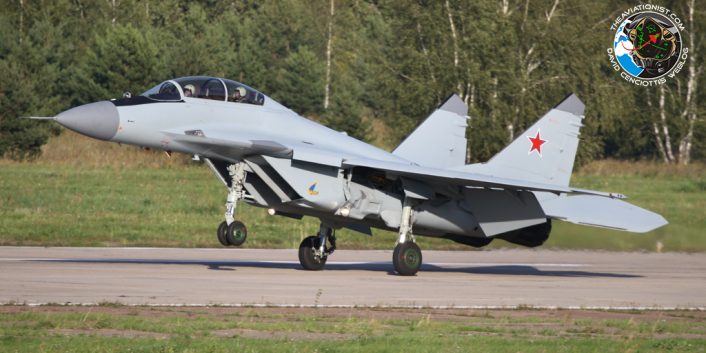
The new MiG-35 also carries a significant payload of up to 6,500 kg on its nine hardpoints. The aircraft is armed with a 30 mm Gryazev-Shipunov GSh-30-1 aerial cannon with 150 rounds.
Specifications quoted by UAC’s Mikoyan and published in Indian news media from reports at MAKS 2019 say the MiG-35 is capable of a maximum speed of 2,400 km/hour, over Mach 2, and has a range of 2,400 km without midair refueling.

